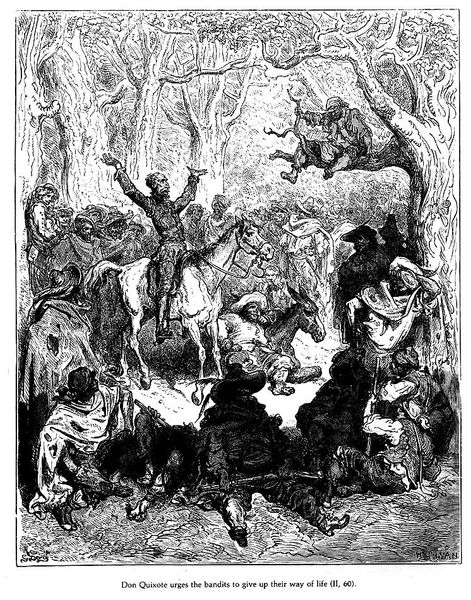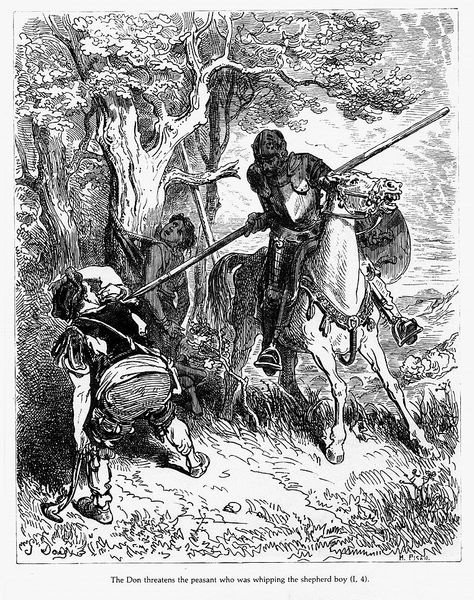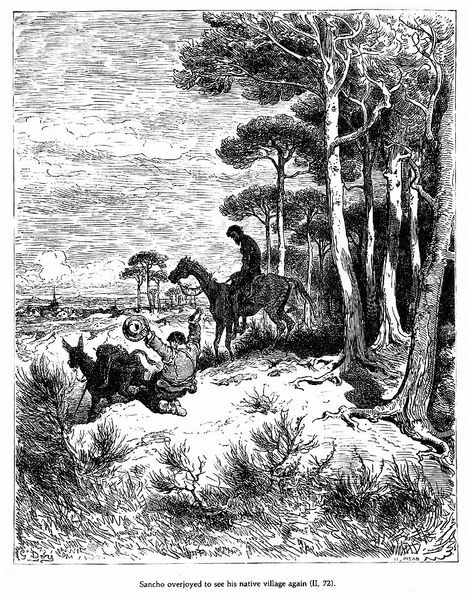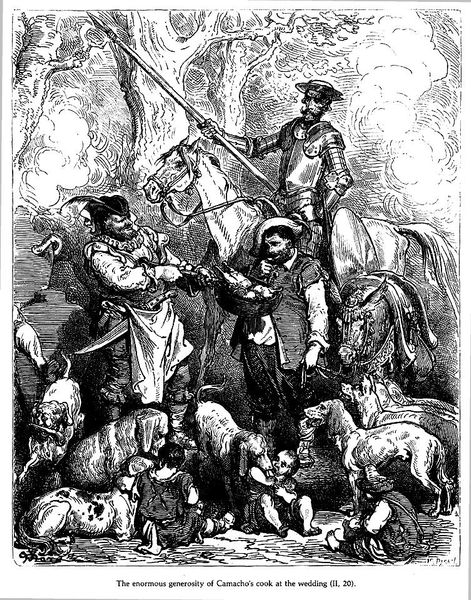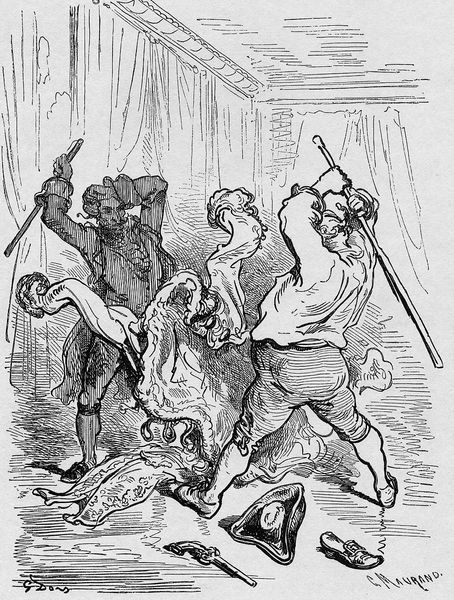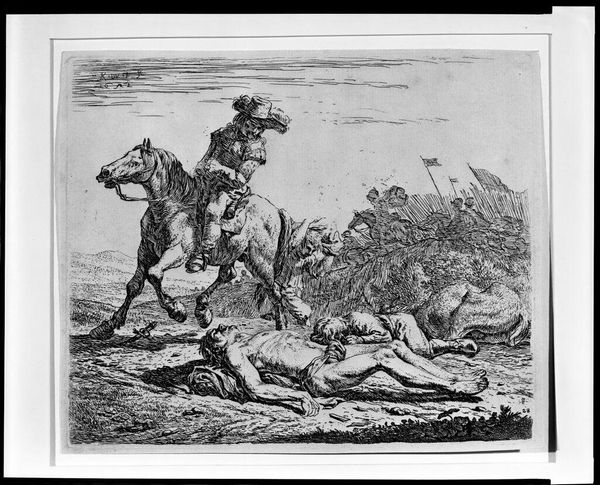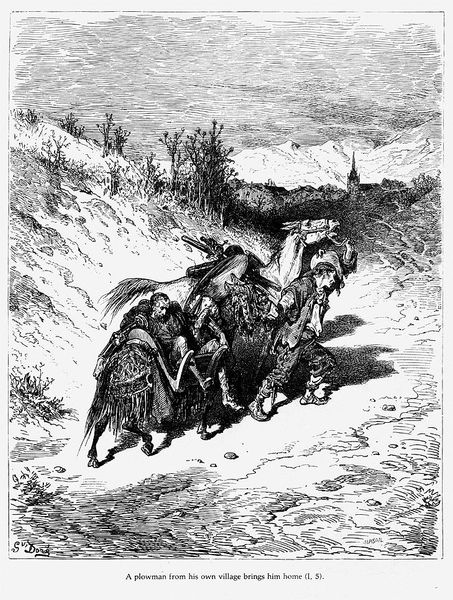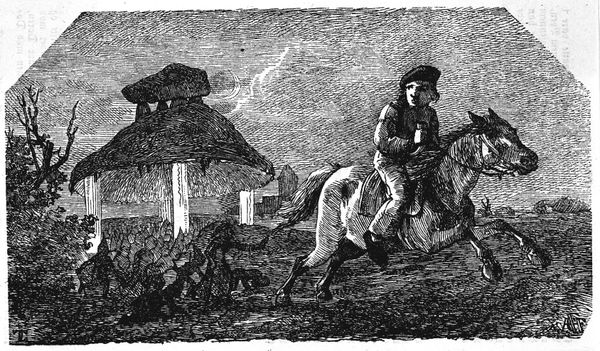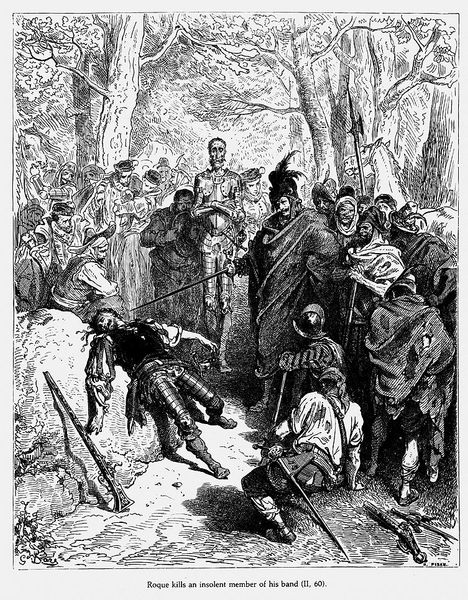
drawing, pen, engraving
#
drawing
#
narrative-art
#
animal
#
pen illustration
#
landscape
#
figuration
#
romanticism
#
pen-ink sketch
#
horse
#
pen work
#
pen
#
history-painting
#
engraving
Copyright: Public domain
Gustave Doré created this engraving of Don Quixote, a character deeply embedded in Spanish literature. Published in 1863, the image captures a moment of both high comedy and deep pathos. Doré, living in a rapidly industrializing France, engages with the nostalgia for a romanticized past that the figure of Don Quixote embodies. We see Quixote sprawled on the ground, his armor askew, having mistaken a windmill for a giant. His loyal squire, Sancho Panza, looks on, caught between duty and a certain skepticism. The stark contrast between the idealistic Quixote and the grounded Sancho speaks volumes about societal expectations and the roles individuals play within them. Quixote, lost in his fantasies, represents a yearning for a world of chivalry and adventure, while Sancho embodies the pragmatism of the everyday. The image asks us to consider the value of dreams in the face of reality, and the complex relationship between those who dare to dream and those who keep them tethered to earth.
Comments
No comments
Be the first to comment and join the conversation on the ultimate creative platform.
